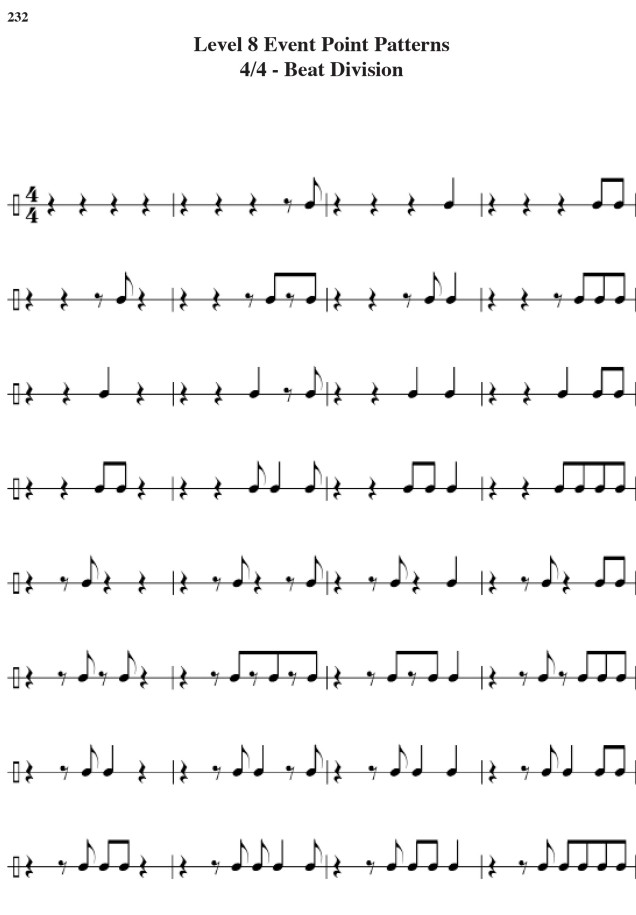The 3rd video in our series of Introduction to The Elements of Rhythm Vol. II, Relative Notation and Counting Syllables.
Here, we present the complete list of fundamental building block rhythm patterns from Volume I and do so in a way that lets us read identical-sounding rhythm patterns in varying metric contexts, such as 4/2, 4/4, 4/8, 4/16, and 4/32, simultaneously.
We also introduce the concept of relative notation, where an absolute sound shape is written using varying notation, depending upon the beat note context. Various counting exercises are presented to help de-condition our usual expectation of counting certain types of notation using predictable syllables (e.g., sixteenth rests and notes as 1 e + uh in 4/4, as opposed to 1 + 2 + in 4/8, for example).
A complete list of counting syllables for Event Point Levels 1-8 are introduced as well, and serve as a helpful tool for beginner readers, allowing them to clap, sing and sound out all of the fundamental building block rhythm patterns.
For viewers unfamiliar with the books, this video will give you a good overview and hopefully inspire you to want to learn more about The Elements of Rhythm, Vols. I & II.
